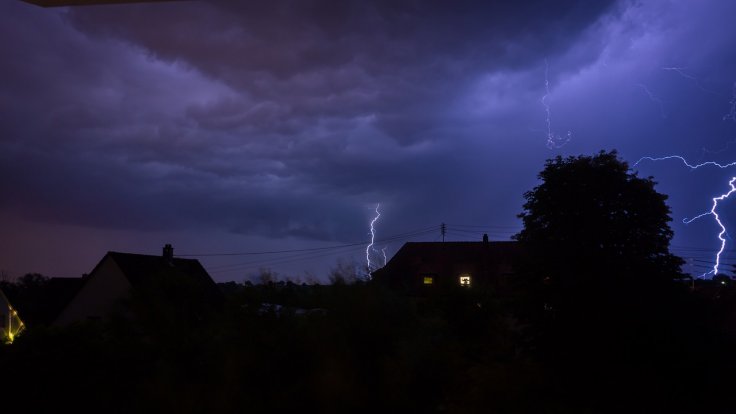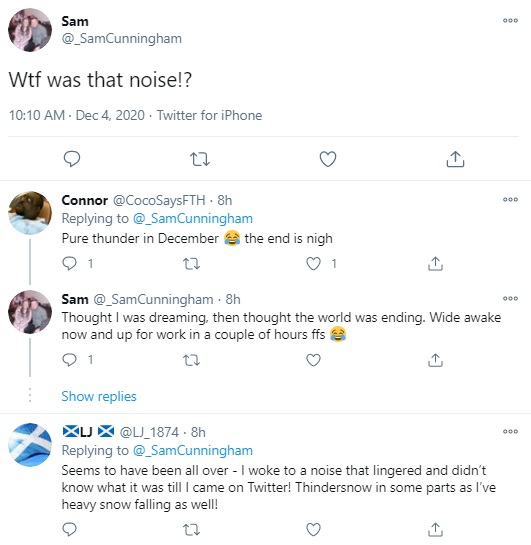The residents of Scotland's Edinburgh were frightened after they woke up in the early hours on Friday, December 4 due to the sounds of loud explosions. The horrified residents contacted the emergency services immediately as they thought the sounds were caused by a plane crash or the collapse of a giant building.
The local authorities later explained the situation to the residents saying that the sounds were caused by the phenomenon known as thundersnow or thundersnowstorm, an unusual kind of storm in which snow falling occurs as the primary precipitation instead of rain.

As per the reports, two unusually loud thunderclaps were heard in Edinburgh, which not only terrified the residents, who thought the sound was a sonic boom or from an explosion, that has set off the car alarms.
After receiving several emergency calls, the Police Scotland Control Rooms tweeted that "We have received a number of calls regarding people concerned about explosions heard. Please do not be alarmed, we are currently experiencing thunder and lightning".
The snow has disrupted the local connectivity, including the closure of the Queensferry Crossing, a road bridge in Scotland that carries the M90 motorway between Edinburgh and Fife.



It Is Snowing
Grahame Madge, a Met Office spokesman, said that it was thundersnow, which happens when thunderstorms form in wintry conditions, giving the rise to heavy downpours of snow. If it happens in the night, the lightning appears brighter because of the reflection on the snowflakes.
The Met Office warned about upcoming more wintry weather in other parts of the country. It also issued a warning for snow and heavy rain through Friday morning in England and the south-east of the country. In addition, the warning says, "In a few places, 1-2cm of snow could accumulate, mainly on grassy surfaces over the North Downs and Chilterns."
The authority also issued yellow warnings across Scotland, Northern Ireland. The coldest weather is expected in the northwest region of Scotland overnight where temperatures may drop to minus 10 degree Celsius (14F).







